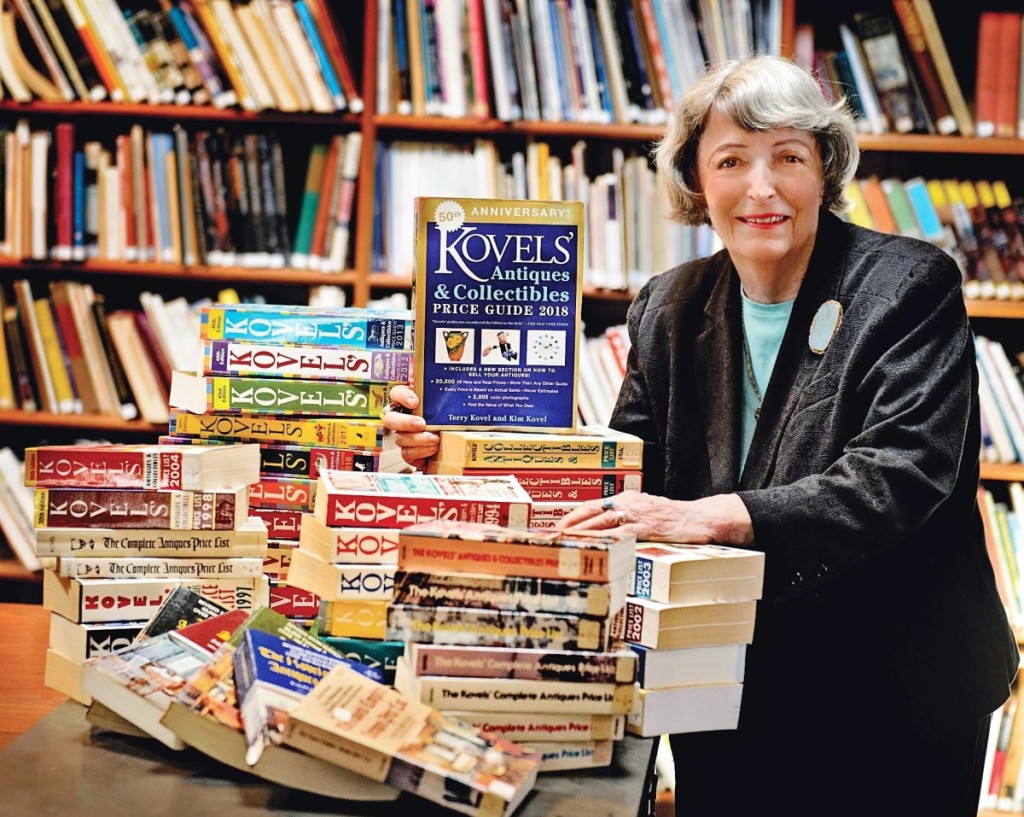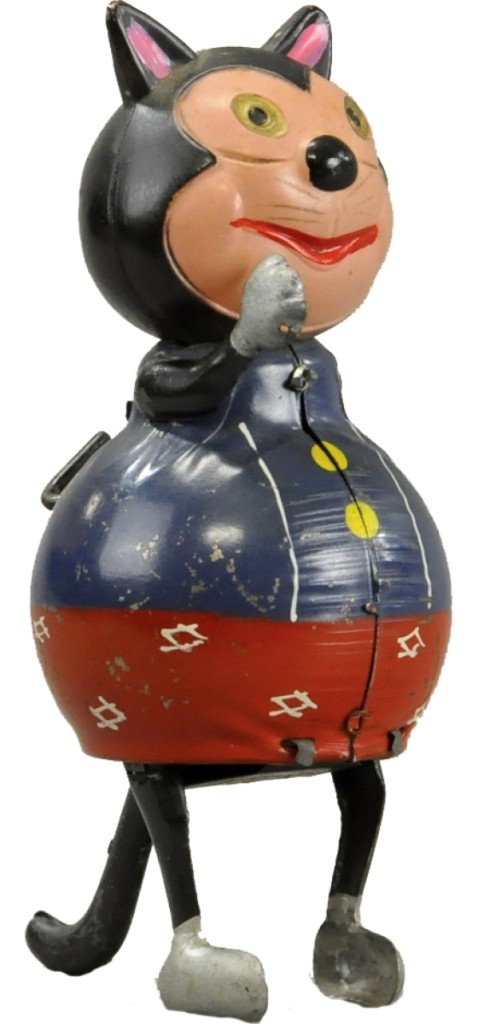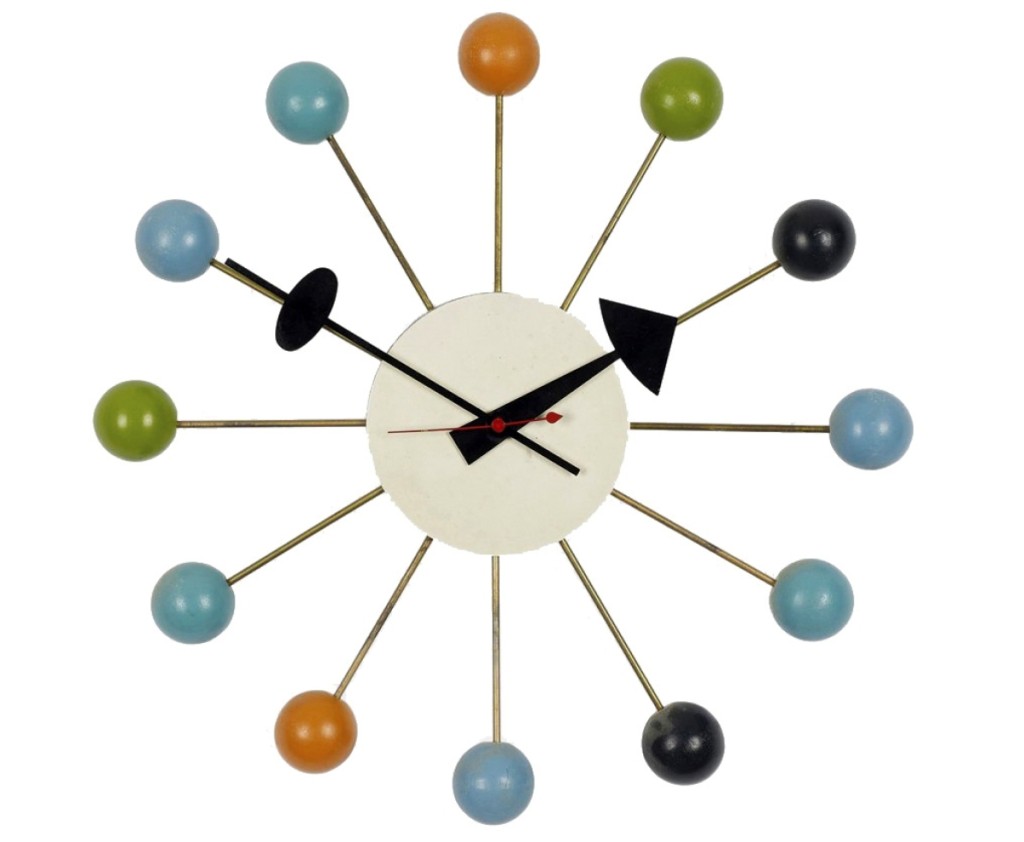
Our hats are off to Terry Kovel, who has just released the 50th anniversary edition of Kovel’s Antiques & Collectibles Price Guide. The Ohio resident and her late husband, Ralph, accumulated a staggering number of career firsts beginning in 1953 with the publication of Dictionary of Marks – Pottery & Porcelain. The couple launched their nationally syndicated newspaper column Know Your Antiques in 1954, won two Emmys for what was the first national public television series on antiques and, if you can imagine it, devised an antiques database in the days of UNIVAC and keypunch cards. More than a million prices, plus oodles of other resources for collectors, can be found at www.kovels.com. Priceless, however, is Terry Kovel’s annotated, highly personal timeline of collecting between 1950 and 2017, a special feature of the all-color 50th anniversary edition.
Congratulations. Do you feel 50 years wiser?
I can’t believe I made it. Actually, I never even thought about it until years later.
How did you and Ralph get started?
I was a math major at Wellesley College. Ralph was in the food business, always on the road and wanting to find work closer to Cleveland, where we were from. We married in 1950 and our first book came out in 1953. We’d been frequenting house sales and were frustrated by the lack of useful references. Initially, I worked in an upstairs bedroom. My father told me my office would be in the living room if I didn’t get the books off the wall. As our business grew, we kept adding garages.
What prompted you and Ralph to collect?
The first antique Ralph bought me was a $15 music box. We really started collecting after we married. We were in apartments for two years before we built our house in Shaker Heights. In those days you furnished with Williamsburg reproductions. You didn’t buy old things, you inherited them. You certainly didn’t buy antique furniture. I started by collecting blue and white English porcelain for my blue and white apartment.
Looking back, why were you so successful?
I was lucky, young, in the right place and loved to do research. Being in the Midwest was a plus. Much, including furniture and ceramics, was made here, and we wrote with the average person in mind. We made no quality judgments. I still avoid saying this is amazing or beautiful. It is in the eyes of our readers.
How did your first price guide come about?
I woke up in the middle of the night and said, we must write a price book. Warman’s was out there, but it was limited in scope. Crown Publishers was immediately receptive. They had a client who had been asking for just such a thing.
You invented the antiques database before the personal computer. How did you do it?
Because I was a math teacher, I thought there might be a way to sort all those prices. We started on a key-punch machine. I had four people who did nothing but enter prices. My job was to proofread all these things. The equipment got fancier and we got computers. We had to learn to code. We’ve been told we were the first commercial book done on a computer.
Aren’t you just back from Art Basel Miami?
My daughter, Kim Kovel, is my partner now. She lives in Miami and is into anything post-1950, so I go to the fairs every year. Design Miami is my favorite. I had a long chat this time with the dealer John Keith Russell, who was showing Shaker design to people who were unfamiliar with it but were absolutely fascinated, as am I. We built our house here in Shaker Heights on what was once a Shaker farm.
How has collecting changed?
People under 50 want very large, colorful, mint things, preferably with personal meaning to them. You can’t sell sets of flowery dishes. On the other hand, advertising art is doing very well. We auctioned a portion of our country-store collection through Rachel Davis in September. One of the first things we bought when we moved here was a tin Grape Nuts sign. It cost me $15 or $25, is now worth up to $4,000 and hung in our breakfast room for 25 years.
How has your audience evolved?
It’s split, so we do everything in print and online. The queries we get are primarily from people who inherited something, so that tells us their age. They still buy books in bookstores and they love old things. Of course, collecting interests have always varied by region.
Best bits of Koveliana?
The first is that Roy Lichtenstein (1923-1997) hung our drapes. His wife at the time was a successful Cleveland decorator and he was a starving artist supplementing his income with odd jobs. He offered us some dreary pictures. We weren’t foresighted enough to buy them. Another time we found a piece of Paul Revere silver at a house sale. We didn’t see the mark until we got it home. We ignored the dealer’s suggestion that we silverplate the piece because it was tarnished.
-Laura Beach






